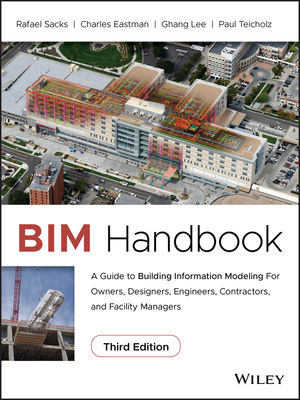Fancy Footwork To Steady the Course of Brooklyn's Controversial Atlantic Yards Sports Village

Fifteen years ago, the 22-acre plot for the $4.9-billion Atlantic Yards sports village in Brooklyn, N.Y., was an eyesore. For more than 20 years, drug dealers, gangs and prostitutes had populated the neighborhood. Many buildings were vacant. "Blighted Brooklyn" was a more fitting moniker than the familiar "Brownstone Brooklyn."
Now, crime is down, and land values are way up. Pedestrians are pushing strollers, not drugs. Brooklyn is on the map, thanks in large part to developer Bruce C. Ratner. In the late 1980s, he went where no Manhattan developer dared to go—to Brooklyn. First came an office campus called MetroTech Center (ENR 2/10/92 p. 26). Other commercial projects, which border the Atlantic Yards site, followed.
The urban pioneer's stake in the New York City borough, population 2.5 million, did not prepare him for the controversy over his most ambitious project: a public-private village set over a railyard next to the city's third-largest transit hub (ENR 3/8/04 p. 29). Foes of the Atlantic Yards plan, unveiled in 2003, often refer to Ratner by the first syllable of his name and remain outraged by the development's scale, density and architecture. Their lawsuits delayed Ratner's plan but failed to stop it.
Critics are especially appalled by the village's centerpiece: a 675,000-sq-ft arena for the National Basketball Association's Brooklyn Nets, owned in part by Ratner. Barclays Center is set to open with a Jay-Z concert on Sept. 28, five years later than first planned. Ratner's latest recession-altered plan also calls for six million sq ft of residential space, 247,000 sq ft of retail space and 336,000 sq ft of office space in 16 buildings, plus eight acres of open space. Build-out is expected to take 25 years instead of the original 10, at a cost of $4.9 billion, not the original $2.5 billion.
"Atlantic Yards has been about navigating [economic] turmoil and change," says MaryAnne Gilmartin, an executive vice president at the village's developer, Forest City Ratner Cos.
FCRC is jumping through hoops to stay in the game. It added partners, switched architects, redesigned elements and stretched out construction. To help cope with changes, including an arena-facade redesign, FCRC teams are using high-tech tools.
And to build the residential towers economically, the developer is diving into the high-tech factory-modular building business. If its plans crystallize, Atlantic Yards will be home to the world's tallest modular building.
That's quite a lead paragraph. For fiction.<br/><br/>"Drug dealers, gangs and prostitutes" just a block away from the 78th precinct?<br/><br/>How about checking out<br/><a href="http://...
"Drug dealers, gangs and prostitutes" just a block away from the 78th precinct?
How about checking out
http://atlanticyardsreport.blogspot.com/2006/10/21-years-of-prospect-heights-blight.html
or a description of when the hookers (but not gangs/dealers) roamed, a lot earlier
http://www.brooklynpaper.com/stories/33/18/dtg_freddyshistory2010_04_30_bk.html
or the court decision on "relatively mild conditions of urban blight"
http://atlanticyardsreport.blogspot.com/2009/11/faq-on-court-of-appeals-decision-in.html
And no one, even the developer, calls it a "sports village."
Norman Oder
Atlantic Yards Report
A sports village, in ENR lexicon, is a multi-use development anchored around a sports venue (or two). ENR has been using the term for about eight years. Cities, including San Diego and ...
In the early to mid-1980s, the neighborhood around the Flatbush Ave. Long Island Railroad Terminal and the Atlantic-Pacific subway hub, at the crossroads of Fourth Avenue, Flatbush Avenue and Atlantic Avenue, was very rough. There were prostitutes. I saw them. There were boarded up storefronts all along Fifth Avenue. There were drug dealers along Fifth Avenue. I saw them, too. In the late 1970s and early 1980s, real estate values were very low in that section of Brooklyn. Even in the early 90s, real estate values west of Fourth Avenue were low. This is not fiction.
Nadine Post
The ease with which writers are willing to default to stereotype over accuracy and substitute 15 years ago for maybe 30 years is disappointing. It's also lazy.
So, Nadine, using the years you yourself cite, it would appear that your math skills are somewhat wanting. Last time I looked 2,012 less 1,985 was 27 not 15.
2012 minus 15 is 1997 minus 20 is 1977. The area was an eyesore. For more than 20 years before that, etc., etc., etc.<br/><br/>
I'm sorry, ENR Editorial or Nadine Post, or whoever, that answer makes no sense at all. Are you now saying that the "blighted" state if the area existed from 1977 to 1997 despite the fa...
The eyesore at Atlantic and Flatbush Avenues described by the author was no different than hundreds of similiar places all over NYC during the late 70's and 80's. The city almost went b...
To claim that FCRC is largely responsible for the revitalization of this area of Brooklyn is to ignore the many people who bought homes in Fort Greene, Clinton Hill and Prospect Heights when banks and developers had given up on Brooklyn. These residents have worked to create famly friendly neighborhoods, decent schools and terrific local retail and restuarants.
So what did Brooklyn get? First, a bait and switch - a iconic Frank Gehry project that was scuttled for a generic arena; later swathed in steel so it looked like an architect designed it - a 25 year build-out of the housing instead of the 10 year that was initially proposed - no guarantee of affordable housing (the feature most supported by communities).
To write this story without talking to opponents, elected officials and citizens is an affront to journalism.

